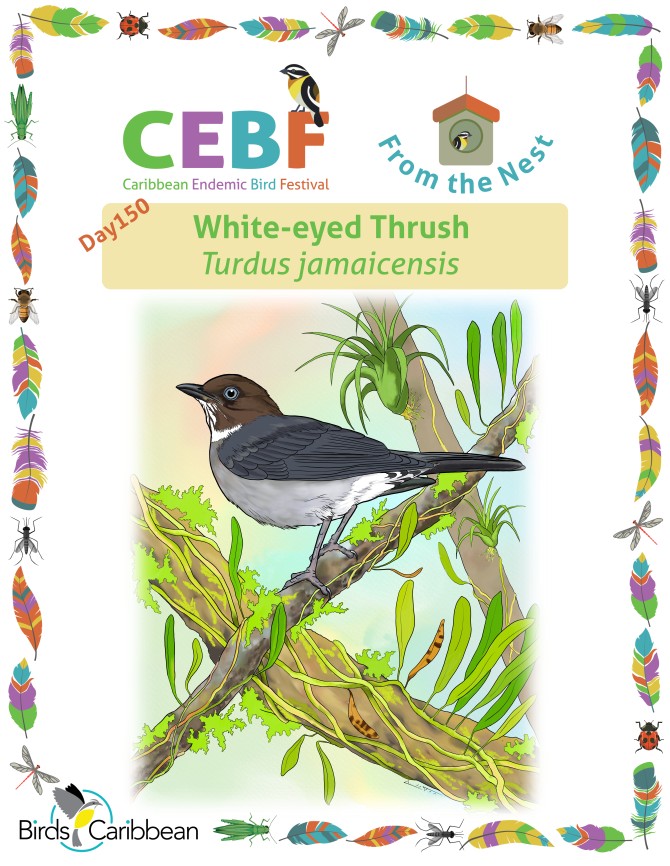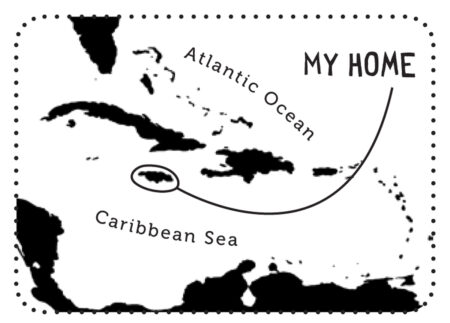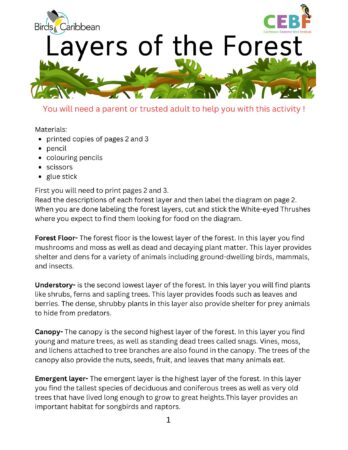Celebrate the Caribbean Endemic Bird Festival (CEBF) with us! Our theme in 2024 is “Protect Insects, Protect Birds”—highlighting the importance of protecting insects for birds and our environment. Have fun learning about a new endemic bird every day. We have colouring pages, puzzles, activities, and more. Download for free and enjoy learning about and celebrating nature!
Endemic Bird of the Day: White-eyed Thrush
Let’s dive into the world of a Jamaican beauty—the striking White-eyed Thrush!
The White-eyed Thrush is a charming bird with a glossy, dark plumage and, as its name suggests, stunning white eyes that pop spectacularly against its dark feathers. The head is rich chocolate brown and the body has darker gray upperparts paired with light gray underparts. Its throat features white streaks on a brown background, bordered by a white patch below. These thrushes are endemic to Jamaica, where you will often spot them hopping around in the understory of lush forests. However, they are quite adaptable and resourceful birds, and can also be found in gardens, parks, and even urban areas. White-eyed Thrushes are known for their playful behavior, often seen hopping around fallen branches or splashing in puddles. These birds are quite the acrobats, so be sure to take some time to observe their entertaining antics when you spot them!
White-eyed Thrushes are omnivores, gobbling up all the tasty things that they can get their beaks on—insects, fruits, and berries. You can consider them the foodies of the bird world—they enjoy a quite diverse menu, sampling meals from the forest floor to the top of the canopy!
Their song is a melodic medley of “hee-haw” whistles and trills, a beautiful serenade which echoes through the forest. They are quite vocal, chirping away to establish territories or communicate with their mates. From April to June they focus on building their nests in the cozy nooks of trees, crafting them with twigs, moss, and other bits of nature’s treasures. Clutch size is 2-3 speckled bluish-green eggs. They are dedicated parents and take turns to incubate the eggs and feed the chicks until they fledge.
While not currently considered globally threatened, habitat loss remains a concern due to deforestation and urbanization. Invasive species and climate change also pose potential threats to their survival. We can all support White-eyed Thrush conservation efforts by advocating for the protection of their habitats, participating in reforestation projects, and spreading awareness about the importance of preserving biodiversity. So, the next time you are strolling through a Jamaican national park, keep an eye out for these delightful little thrushes—they are sure to brighten your day!
Learn more about this species, including its range, photos, and calls here. Great news! If you’re in the Caribbean, thanks to BirdsCaribbean, you have free access to Birds of the World and you can find out even more in the full species account of this bird!
Thanks to Arnaldo Toledo for the illustration and Michelle Roberts for the text!
Colour in the White-eyed Thrush
Download our West Indies Endemic Bird colouring page. Use the photos below as your guide, or you can look up pictures of the bird online or in a bird field guide if you have one. Share your coloured-in page with us by posting it online and tagging us @BirdsCaribbean #CEBFfromthenest
Listen to the song of the White-eyed Thrush
The song of the White-eyed Thrush is a long series of very variable phrases commonly repeated two to five times.
Puzzle of the Day
Click on the image below to do the puzzle. You can make the puzzle as easy or as hard as you like – for example, 6, 8, or 12 pieces for young children, all the way up to 1,024 pieces for those that are up for a challenge!
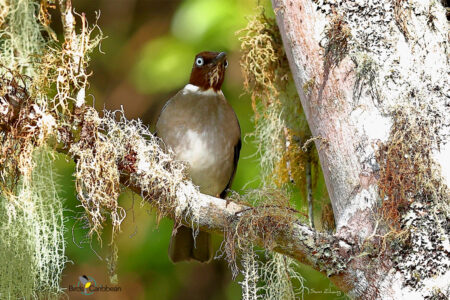
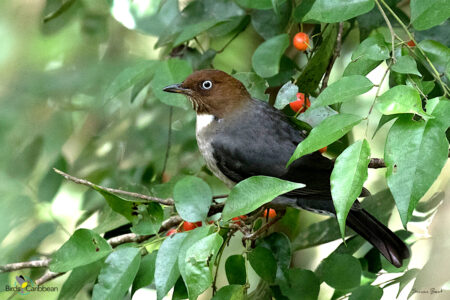
Activity of the Day
FOR KIDS : Today’s bird, the White-eyed Thrush searches for food through the forest layers. Here it will be looking for fruits and creepy crawlies including earthworms on forest floor and insects in the leaves and branches of the trees.
In today’s activity you will learn about the different places in the forest birds feed, from low down on the ground to high up in the tree tops. You will need to put the White-eyed Thrush in the places in the forest where it can be found. You can download all the instructions for this activity here, including all the pages you need to print out to complete this activity! You can use the information in the text above, all about the White-eyed Thrush, to help you correctly place the bird where it likes to feed.
For this activity you’ll need:
-
- printed copies of pages 2 and 3
- pencil
- colouring pencils
- scissors
- glue stick
You will need a parent or trusted adult to help you with this activity!
You can find the correct answers here.
FOR KIDS AND ADULTS : Enjoy this video of a White-eyed Thrush in the wild!

